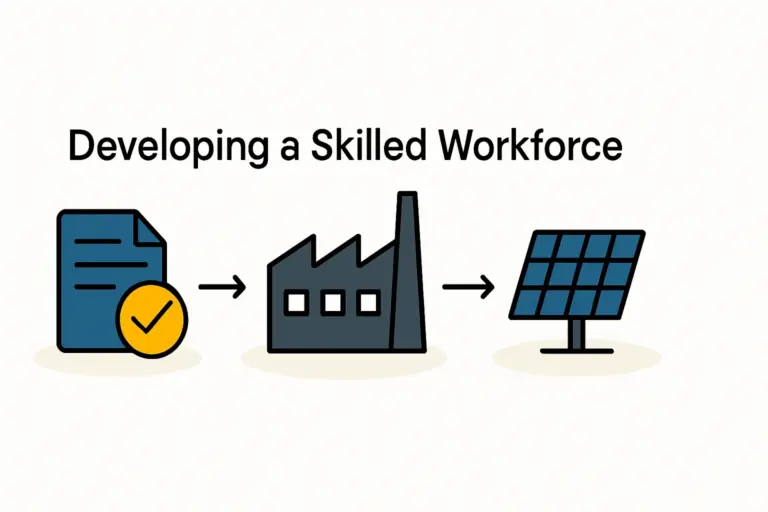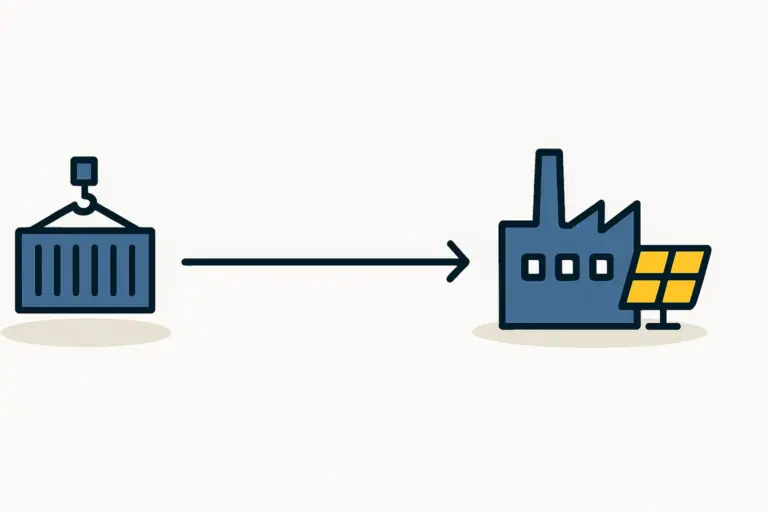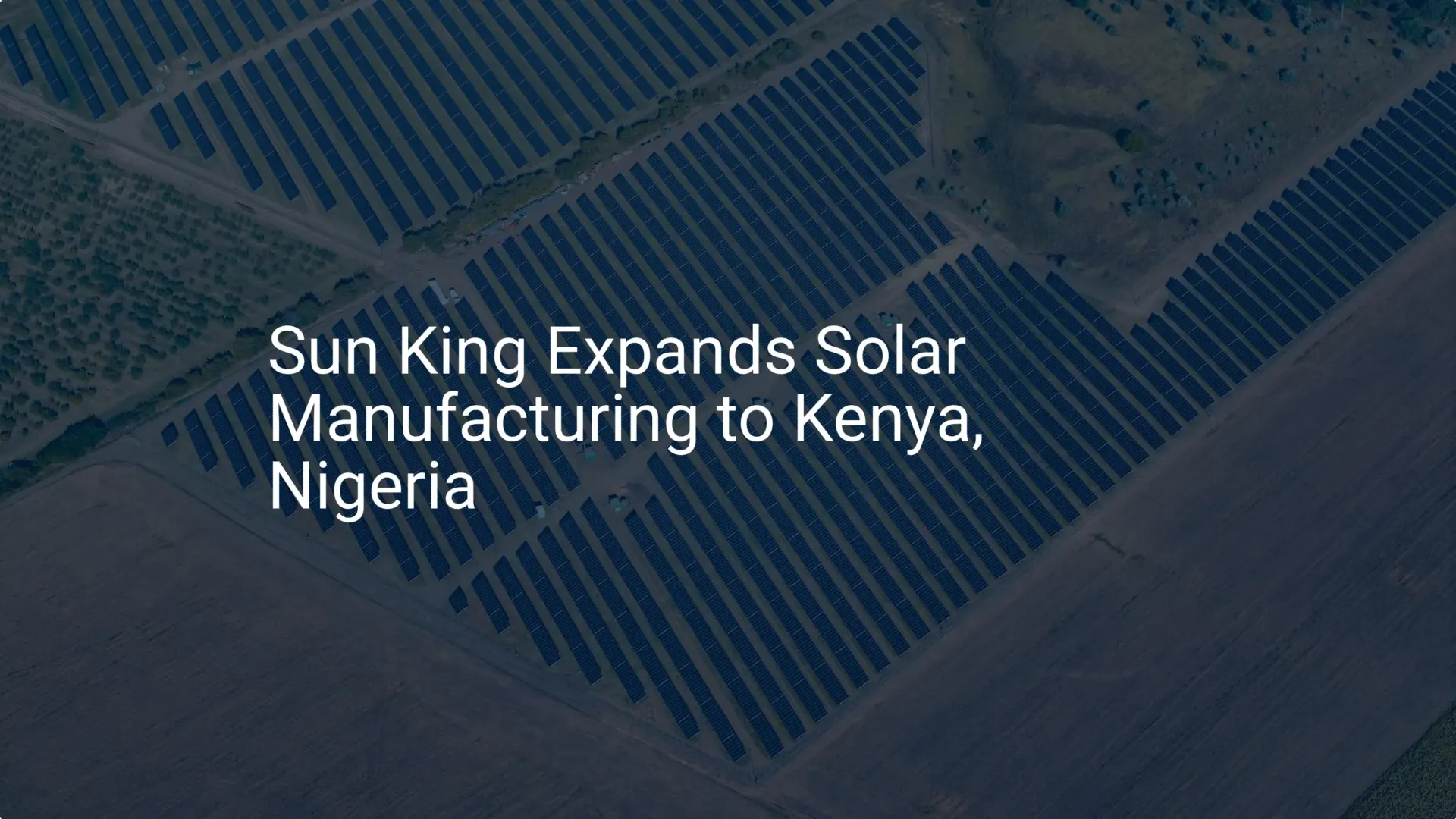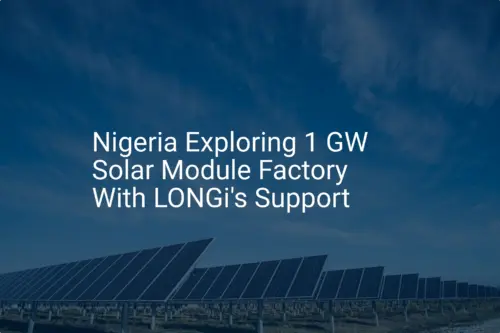An investor looking at Niger sees one of the world’s greatest untapped resources: the sun. With solar irradiance levels far exceeding those in Europe or North America, the potential for solar energy generation appears limitless. Yet, this same environment presents a critical engineering challenge often overlooked in standard business plans—extreme and relentless heat.
Standard solar modules, tested and certified for moderate climates, often suffer significant performance decline and premature failure in the demanding conditions of the Sahel. This article outlines the technical reasons for this vulnerability, along with the engineering and certification requirements for producing durable, high-performance solar modules specifically designed for high-temperature environments. Understanding these factors is crucial for anyone considering entering the field of solar module manufacturing in Africa or other hot climates.
The Opportunity and the Challenge: Solar Energy in the Sahel
Niger is statistically the hottest country on Earth, with an average annual temperature of 29°C and daytime temperatures that frequently surpass 40°C. Yet, it also benefits from world-class solar irradiation, making it a prime location for photovoltaic projects. This combination of abundant sunlight and extreme heat creates a unique set of operating conditions for solar technology.
While high irradiance promises substantial energy yield, the ambient temperature poses a direct threat to the efficiency and longevity of solar installations. A successful manufacturing strategy must build on technology that can withstand these specific climatic stressors.
Why Standard Solar Modules Underperform in Extreme Heat
The power rating of a solar module, stated in watts (e.g., 400 Wp), is determined under highly controlled and standardized laboratory conditions known as Standard Test Conditions (STC).
STC is defined by:
- Cell Temperature: 25°C (77°F)
- Solar Irradiance: 1,000 watts per square meter (W/m²)
- Air Mass: 1.5 (simulating the sun’s angle)
While these conditions provide a useful baseline for comparing different modules, they don’t reflect the reality of operating in Niger. On a typical sunny day with an ambient temperature of 40°C, the solar cells inside a module can easily reach 70-80°C. This significant temperature difference is the primary cause of performance loss.
The Business Impact of Temperature: Power Loss Explained
Every solar module has a temperature coefficient, which specifies how much power is lost for every degree Celsius the cell temperature rises above the 25°C STC baseline. For most standard crystalline silicon modules, this coefficient is between -0.3% and -0.5% per °C.
Consider a real-world scenario in Niger:
- Operating Cell Temperature: 75°C
- STC Temperature: 25°C
- Temperature Difference: 50°C
Using an average coefficient of -0.4% per °C, the immediate power loss can be calculated:50°C × -0.4%/°C = -20%
This means a standard 400-watt module would produce only around 320 watts under these common conditions. For a large-scale solar project, a 20% reduction in output has severe consequences for financial viability and return on investment.

Beyond Performance: The Threat of Accelerated Material Degradation
The impact of extreme heat extends beyond immediate power loss. High temperatures, combined with intense ultraviolet (UV) radiation, accelerate the aging process of the materials used in standard solar modules.
The most vulnerable component is typically the encapsulant, a polymer layer (usually Ethylene Vinyl Acetate, or EVA) that bonds the solar cells to the glass and the backsheet. Over time, constant exposure to high heat and UV can cause EVA to break down, resulting in:
- Yellowing: The encapsulant turns yellow, reducing the amount of light that reaches the solar cells and further decreasing power output.
- Delamination: The layers of the module separate, allowing moisture and oxygen to enter. This can lead to corrosion, short circuits, and complete module failure.
- Backsheet Cracking: The protective backsheet can become brittle and crack, compromising electrical insulation and creating a safety hazard.
These degradation modes can drastically shorten the effective service life of a solar module from the expected 25-30 years to as little as 5-10 years in harsh climates, undermining the long-term economics of a project.
Engineering for Resilience: The DESERT+ Technology Approach
Addressing these challenges requires specialized solar module technology, such as the DESERT+ specification developed by J.v.G. Technology GmbH. This approach is not about a single invention but a systematic selection of more robust materials and a more rigorous certification process.
Superior Materials for a Demanding Environment
The core of a high-temperature module lies in the choice of materials integrated into the solar panel production line.
- Encapsulant: Instead of standard EVA, DESERT+ modules use Polyolefin Elastomer (POE). POE is an advanced polymer with inherently superior resistance to heat, UV radiation, and moisture. It has a much lower water vapor transmission rate, protecting cells from humidity-induced degradation. POE is also highly resistant to Potential Induced Degradation (PID), a phenomenon that can cause significant power loss in high-voltage systems operating in hot and humid conditions.
- Backsheet: These modules also incorporate specially formulated, highly durable backsheets that resist UV degradation and remain flexible without cracking over decades of thermal cycling.
Certification: Proving Durability Beyond Standard Tests
While standard certifications like IEC 61215 (performance) and IEC 61730 (safety) are necessary, they are insufficient to guarantee long-term reliability in extreme climates. For this reason, modules designed for desert environments undergo extended and more stressful testing protocols.
One key standard is IEC TS 63126, which subjects modules to extended thermal cycling, damp heat, and UV exposure tests that go far beyond baseline requirements. For example, instead of the standard 200 thermal cycles, modules might be tested for 600 or 800 cycles to better simulate a 30-year lifetime in a desert. Other advanced qualification methods, such as the Thresher Test or Pressure Cooker Test (PCT), provide further proof of material stability under extreme heat and humidity.

Strategic Advantage for Local Manufacturing in Niger
For entrepreneurs in Niger and the surrounding Sahel region, establishing a factory capable of producing modules certified for high-temperature operation represents a powerful competitive advantage.
Rather than competing with low-cost, standard modules imported from other regions, a local manufacturer can offer a product that is demonstrably superior for the local market. Doing so builds a reputation for quality and reliability, making projects more ‘bankable’ and attractive to international investors. This strategy also ensures that the energy infrastructure being built is sustainable and will deliver its expected returns over a full lifetime. Experience from J.v.G turnkey projects shows that adapting production to these specifications is a planned process that secures a strong market position. With well-designed turnkey solar manufacturing lines, a new entrant can produce a premium, climate-specific product from day one.

Frequently Asked Questions (FAQ)
Is this technology significantly more expensive to produce?
The initial cost of advanced materials like POE is higher than standard EVA. However, this typically adds only a few percent to the total module production cost. When weighed against a 20% performance gain and a service life that is two or three times longer, the return on investment is substantially higher.
Can an existing production line be adapted to produce DESERT+ modules?
Yes. The transition primarily involves qualifying the new materials (POE and backsheets) and adjusting lamination process parameters, such as temperature and timing. The core machinery for cell stringing, layup, and framing remains the same.
Are these modules only for Niger or the Sahel region?
While designed with the Sahel in mind, this technology is ideal for any region with a hot, arid, or humid climate. This includes the Middle East, North Africa, Australia, and parts of the Southwestern United States and Latin America.
What is the typical lifespan of a DESERT+ module compared to a standard one in Niger?
Standard modules may begin to show significant degradation within 5-10 years in such a climate. A module built with DESERT+ specifications is engineered and warrantied for a service life of 25-30 years with a much lower annual degradation rate, ensuring predictable energy production for decades.
Conclusion and Next Steps
The immense solar potential of Niger can only be realized with technology engineered for its unique climate. Standard solar modules, while suitable for temperate regions, are ill-equipped to handle sustained high temperatures, leading to significant power loss and rapid material degradation.
By focusing on superior materials like POE encapsulants and validating performance through extended certification standards, manufacturers can produce modules that thrive in the world’s most demanding environments. For local entrepreneurs, embracing this high-temperature technology is not just an engineering choice—it is a strategic decision that creates a lasting competitive advantage and ensures the long-term success of the region’s solar future.
To explore the process of setting up a local manufacturing facility, pvknowhow.com provides structured resources, including a free e-course that guides new entrants through the essential planning stages.






